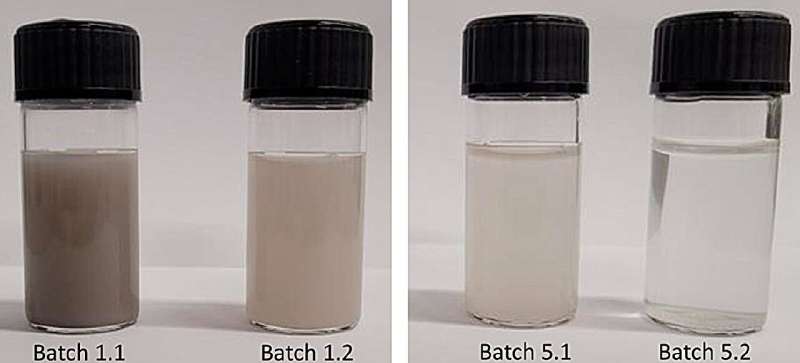This article has been reviewed according to Science X's editorial process and policies. Editors have highlighted the following attributes while ensuring the content's credibility:
fact-checked
trusted source
proofread
Moon dust could contaminate lunar explorers' water supply

Water purification is a big business on Earth. Companies offer everything from desalination to providing just the right pH level for drinking water. But on the moon, there won't be a similar technical infrastructure to support the astronauts attempting to make a permanent base there. And there's one particular material that will make water purification even harder—moon dust.
We've reported plenty of times about the health problems caused by the lunar regolith, so it seems apparent that you don't want to drink it. Even more so, the abrasive dust can cause issues with seals, such as those used in electrolyzers to create rocket fuel out of in-situ water resources. It can even adversely affect water purification equipment itself.
Unfortunately, this contamination is inevitable. Lunar dust is far too adhesive and electrostatically charged to be kept completely separate from the machinery that would recycle or purify the water. So a group of researchers from DLR in Germany decided to test what would happen if you intentionally dissolved lunar regolith.
The short answer is, unsurprisingly, nothing good. Dissolved lunar regolith causes pH, turbidity, and aluminum concentrations all exceed World Health Organization benchmarks for safe drinking water. This happened even with short exposure times (2 minutes) and static pH values, as they used a 5.5 pH buffer in part of the experiments.
They didn't use actual lunar dust for these experiments, but a simulant modeled on the regolith returned during the Apollo 16 mission. It mimics the regolith that is thought to be most similar to the Artemis landing sites. In addition to the pH changes and the amount of exposure time (which went up to 72 hours), the authors also varied the amount of dissolved oxygen in the system and the particle size of the simulant.
Those negative results occurred for every test variation, no matter what combination of the four control variables was used. Ultimately, that means engineers will have to devise a system to filter the water from these deposits before it can be recycled into the overall water system.
The paper, published by the researchers in Frontiers in Space Technologies, explored some potential solutions for that water purification system. Each of the limits that were violated requires its purification methodology. In the author's estimation, lowering the turbidity is the first requirement. To do so, they suggest doing standard filtration or allowing the dust particles to settle.
Removing aluminum is next in importance, with another experiment showing that plants that grew in lunar soil showed signs of aluminum toxicity. Additional ions, including calcium, iron, and manganese, also need to be removed, as they were above acceptable levels in some test batches but not all. Removing these ions would require a reverse osmosis process or ion exchange. Ion removal is vital to a fully functional electrolyzer system as well.
The authors seemed to be ultimately going after a platform to test and validate water purification processes for future lunar exploration missions. Given the results from their experimentation, there will undoubtedly be future rounds of testing and plenty of technology development to work on solving these technical challenges. Ultimately, astronauts will have to drink water on the moon—and it won't be coming just from bottles from Earth.
More information: Rieke Freer et al, Experimental study to characterize water contaminated by lunar dust, Frontiers in Space Technologies (2024). DOI: 10.3389/frspt.2024.1366591
Provided by Universe Today





















